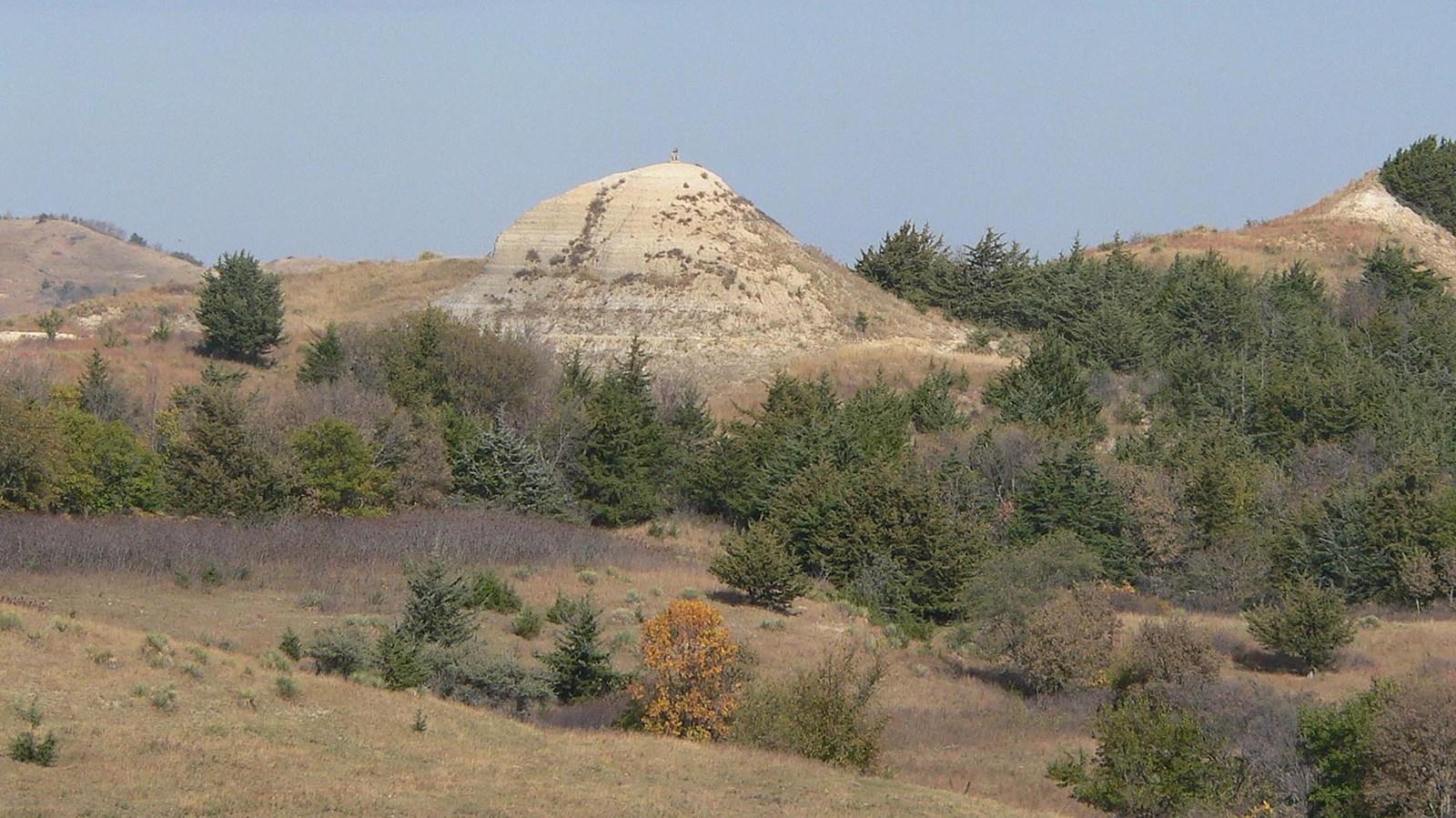Last updated: May 18, 2023
Place
Old Baldy

Ammodramus, Wikimedia
Black-tailed prairie dogs were commonplace on the plains. Indigenous people who lived here were very familiar with them.
But when Meriwether Lewis and William Clark passed through here in 1804—visitors who knew very little of the area or the people, plants, and animals who lived here—they were fascinated.
Midday on September 7, 1804, the captains noticed a hill rising seventy feet above the plains. Its white top of exposed shale stood out prominently. At its base, they saw “a Village of Small animals that burrow in the grown [ground].”
The animal’s behavior intrigued Lewis and Clark and they made copious notes in their journals describing the small creatures. Lewis called them “barking squirrels,” noting “they will generally set and bark at you as you approach them, their note being much that of the little toy dogs, their yelps are in quick succession and at each they a motion to their tails upwards.”
The crew spent the afternoon attempting to capture a prairie dog alive. They began by digging into a prairie dog burrow. They dug down six feet with no success. They finally resorted to using water hauled three-quarters of a mile from the Missouri River to flush out the animals. Five barrels of water later, they finally succeeded in capturing a single prairie dog. John Shields later killed a second prairie dog, which the captains ate.
Lewis and Clark wanted to capture a prairie dog to fulfill President Thomas Jefferson’s instructions to make note of “the animals of the country generally, & especially those not known in the U.S.” The captured animal joined the expedition for a short time. It traveled with them to Fort Mandan where it spent the winter. Lewis then shipped it down the Mississippi River in the spring, and it arrived, still alive, in Washington, DC, and was presented to Jefferson.
About this article: This article is part of series called “Pivotal Places: Stories from the Lewis and Clark National Historic Trail.”
Lewis and Clark NHT Visitor Centers and Museums
This map shows a range of features associated with the Lewis and Clark National Historic Trail, which commemorates the 1803-1806 Lewis and Clark Expedition. The trail spans a large portion of the North American continent, from the Ohio River in Pittsburgh, Pennsylvania, to the mouth of the Columbia River in Oregon and Washington. The trail is comprised of the historic route of the Lewis and Clark Expedition, an auto tour route, high potential historic sites (shown in black), visitor centers (shown in orange), and pivotal places (shown in green). These features can be selected on the map to reveal additional information. Also shown is a base map displaying state boundaries, cities, rivers, and highways. The map conveys how a significant area of the North American continent was traversed by the Lewis and Clark Expedition and indicates the many places where visitors can learn about their journey and experience the landscape through which they traveled.
